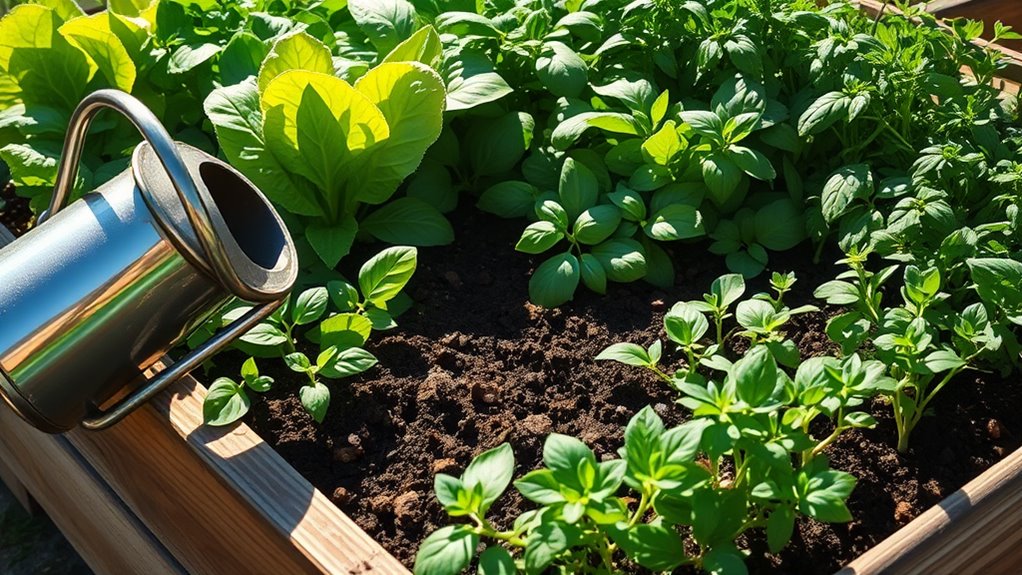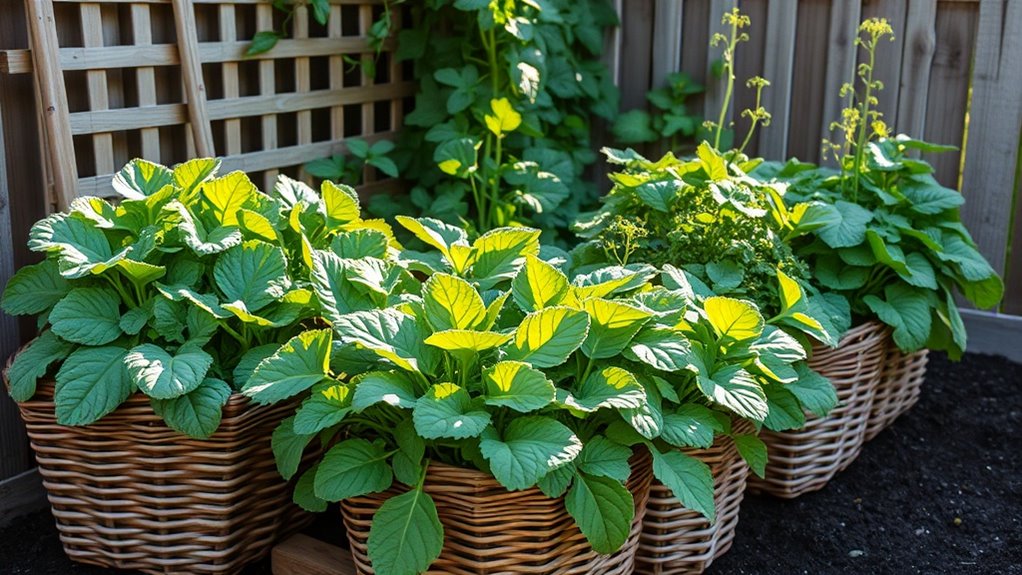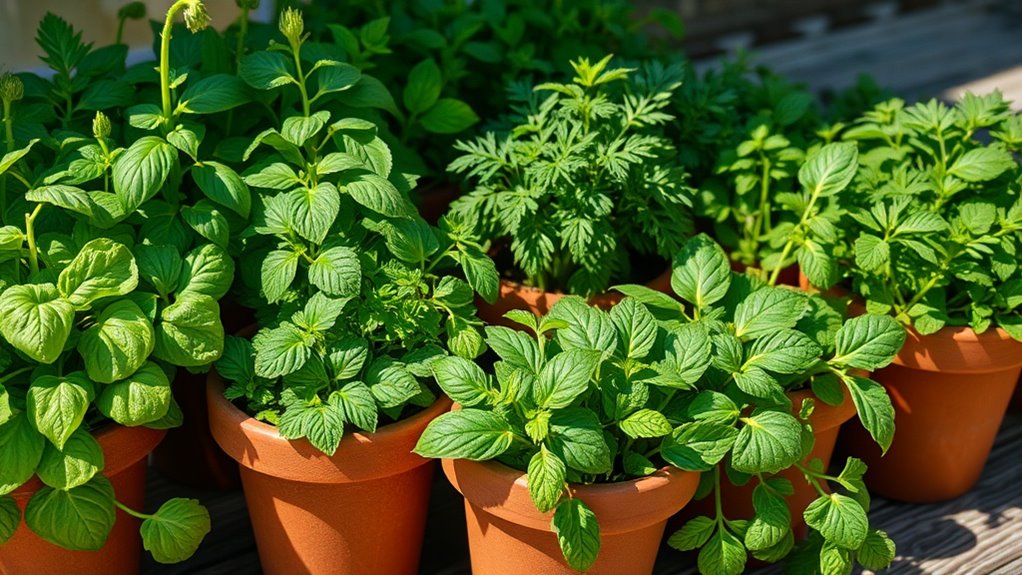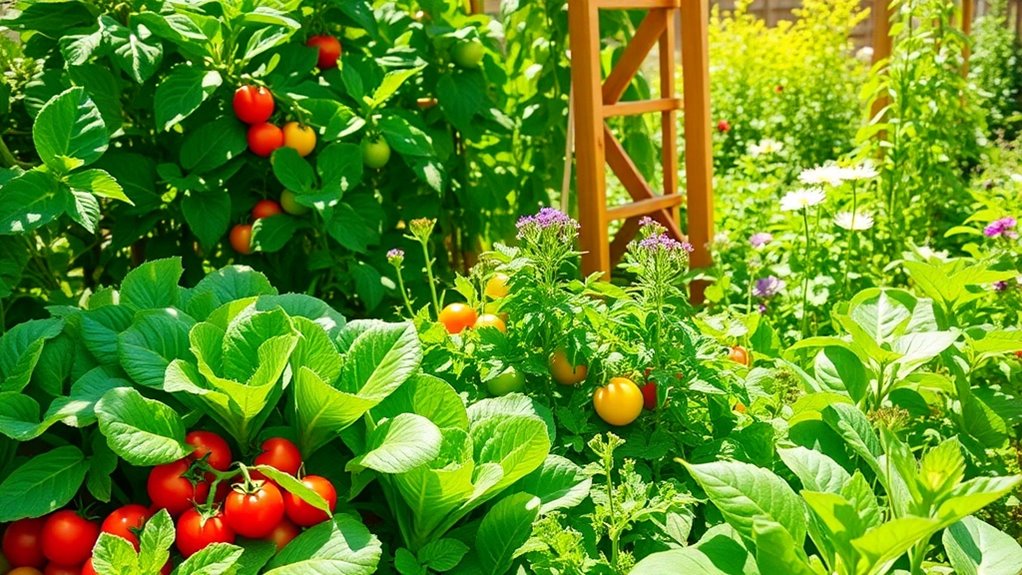Quick-Start Guide to Growing a Salad Bowl Garden
Did you know that homegrown salad greens can contain up to 50% more nutrients than store-bought varieties? If you’re looking to cultivate a fresh, vibrant salad bowl garden, understanding the essential steps is crucial. From selecting the right container to maintaining your plants for optimal growth, there’s a lot to consider. Let’s explore how you can easily create your own salad haven right at home.
Key Takeaways
- Choose a container at least 12 inches deep with adequate drainage holes to support healthy root development.
- Select salad greens suitable for your climate, including cool-season varieties like lettuce and warm-season options like Swiss chard.
- Prepare soil by testing pH, amending with compost, and loosening to ensure proper drainage and nutrient availability.
- Arrange plants based on size, placing taller varieties in the back, and stagger planting for continuous harvest throughout the season.
- Maintain your garden by watering 2-3 times a week, inspecting for pests, and harvesting outer leaves to promote ongoing growth.
Choosing the Right Container
When it comes to growing a salad bowl garden, selecting the right container is crucial for your plants’ success. You’ll want a container that’s at least 12 inches deep, providing ample space for root development.
Choose materials like terracotta or plastic, which retain moisture yet allow for drainage. Ensure your container has adequate drainage holes to prevent waterlogging, which can lead to root rot.
Consider using lightweight pots for easier mobility if you need to reposition your salad bowl garden. Finally, think about the container’s color; darker colors absorb heat, which can affect your plants’ growth during warmer months. Additionally, using containers with proper drainage is essential to support healthy plant growth.
Selecting Your Salad Greens
How do you choose the best salad greens for your garden?
Start by selecting varieties based on your climate and space.
Leafy greens like lettuce, arugula, and spinach thrive in cooler temperatures, while heat-tolerant options such as Swiss chard and kale handle warmer conditions.
Consider growth habits—some, like romaine, grow upright, while others, like loose-leaf, spread out.
Opt for a mix of colors and textures to enhance visual appeal and flavor diversity.
Always check seed packets for specific germination times and growth requirements.
Finally, prioritize disease-resistant varieties to ensure a healthy, abundant harvest throughout the growing season. Additionally, growing conditions such as sunlight and moisture levels play a crucial role in the success of your salad garden.
Preparing the Soil
Before you sow your salad greens, preparing the soil is essential for ensuring healthy growth and a bountiful harvest.
Start by testing your soil’s pH, aiming for a neutral range of 6.0 to 7.0. Amend the soil with organic matter like compost to improve drainage and nutrient content.
Loosen the soil to a depth of at least 12 inches, ensuring it’s aerated for root development. Remove any rocks, weeds, or debris that could hinder growth.
Finally, incorporate a balanced fertilizer, following package instructions, to provide essential nutrients. Additionally, consider using simple methods to evaluate garden soil health to ensure your plants are thriving in an optimal environment.
With well-prepared soil, your salad greens will thrive beautifully.
Planting and Arranging Your Garden
With the soil now prepared, it’s time to plant and arrange your garden for optimal growth.
Choose a variety of salad greens like lettuce, arugula, and spinach, considering their mature sizes and growth rates.
Plant taller varieties in the back or center of your garden, with shorter greens at the edges for sunlight access.
Space seeds or seedlings according to the specific requirements—usually about 6-12 inches apart.
For a continuous harvest, stagger your planting every few weeks.
Water gently after planting and consider adding mulch to retain moisture and suppress weeds.
This arrangement maximizes space and encourages healthy growth. Additionally, ensure that you are mindful of key factors like soil preparation, as they play a crucial role in the success of your indoor garden.
Maintenance and Harvesting Tips
Maintaining your salad bowl garden is crucial for ensuring a bountiful harvest. Regularly check for pests and diseases, and remove any affected leaves immediately. Water your plants consistently but avoid overwatering to prevent root rot. Harvest your greens by cutting them at the base—this encourages new growth. Additionally, incorporating cut and come again greens can provide a longer harvest period and enhance the variety of your salads.
| Task | Frequency | Tips |
|---|---|---|
| Watering | 2-3 times/week | Early morning is best. |
| Pest Inspection | Weekly | Look under leaves. |
| Harvesting | As needed | Pick outer leaves first. |
With these tips, your garden will thrive!





